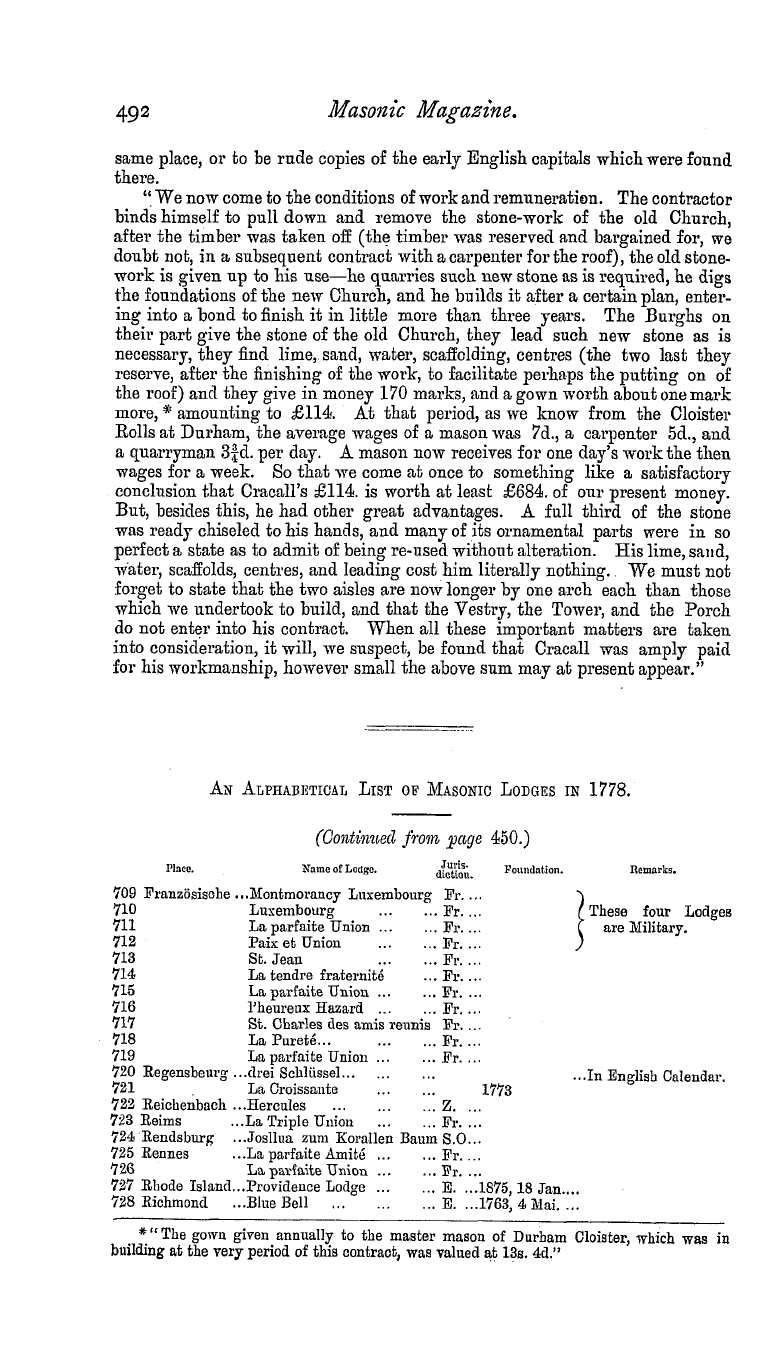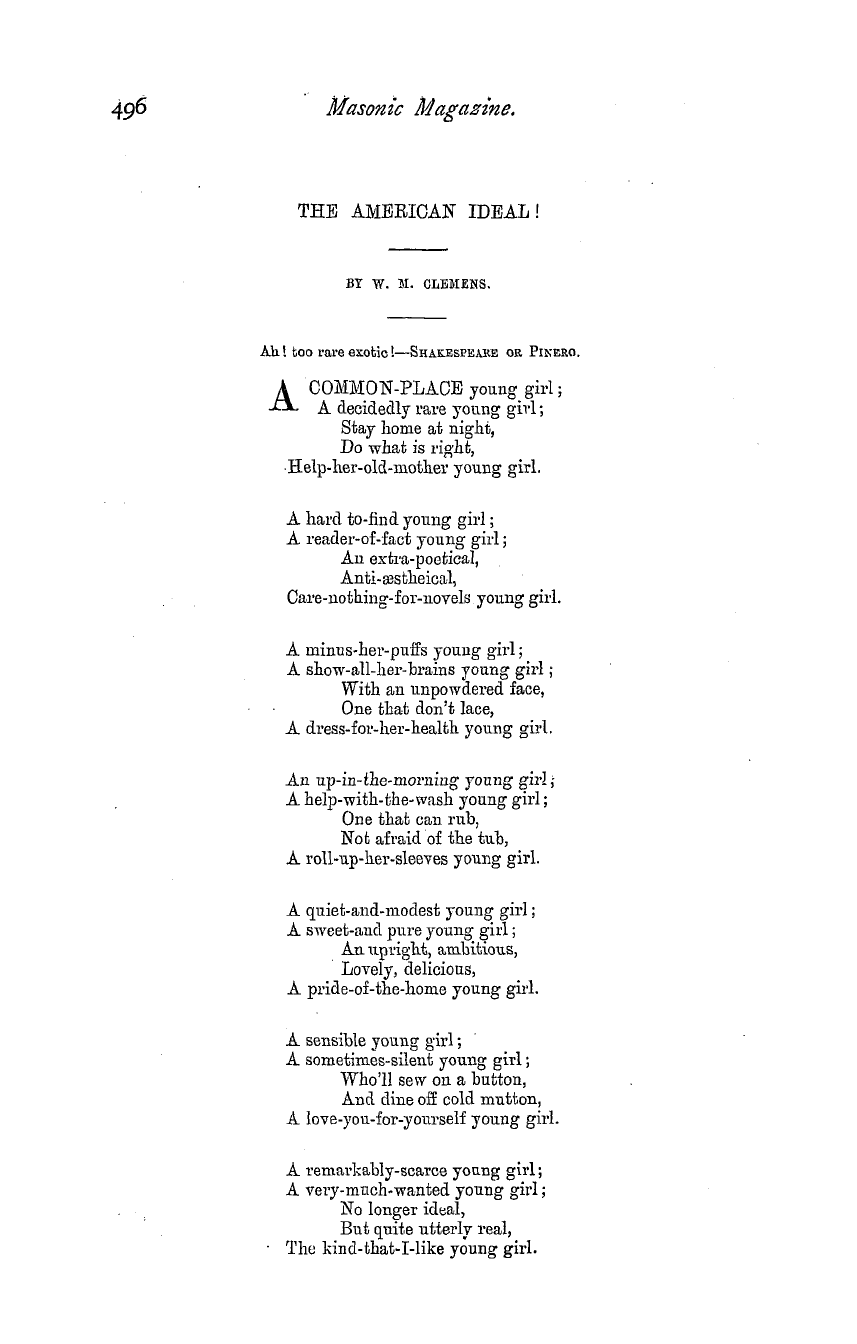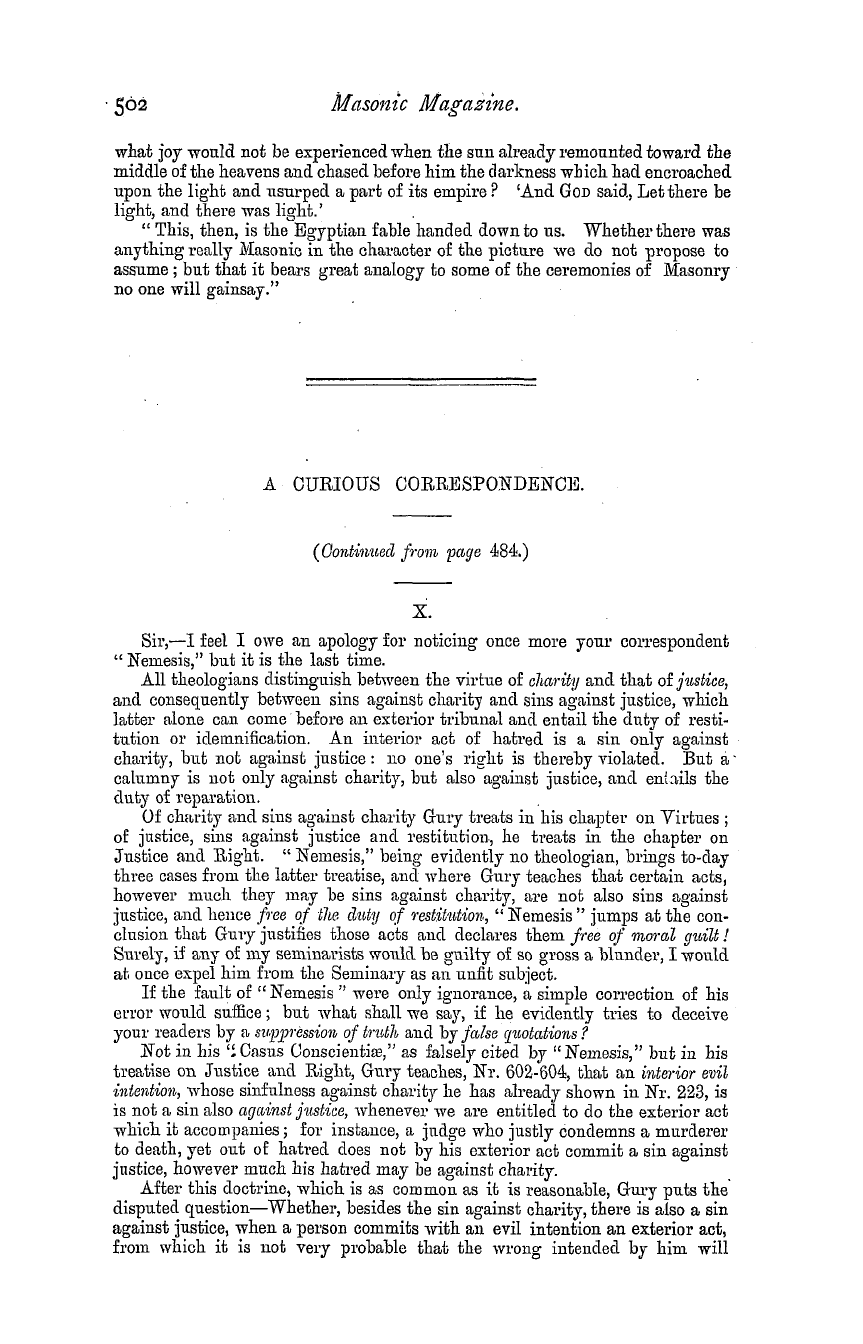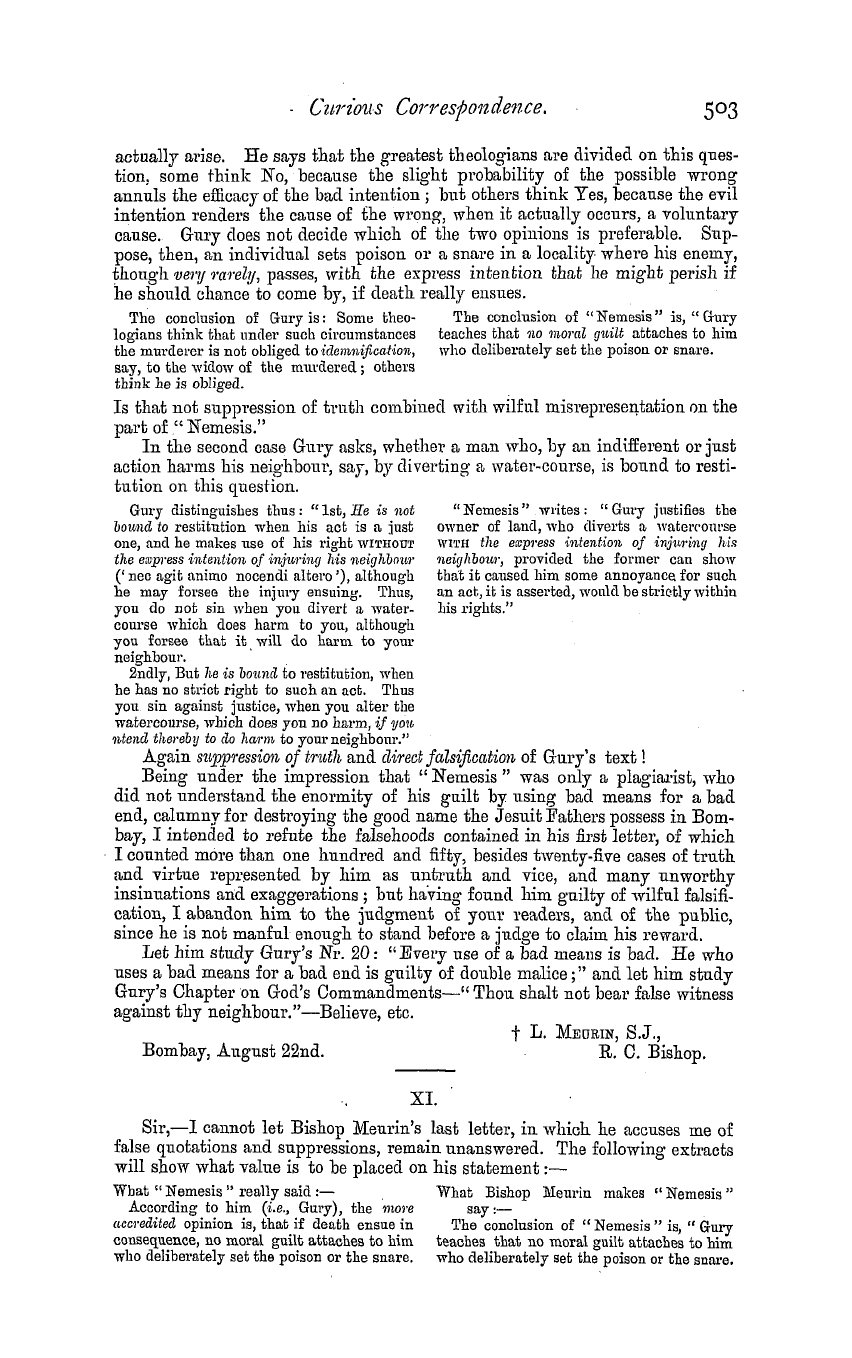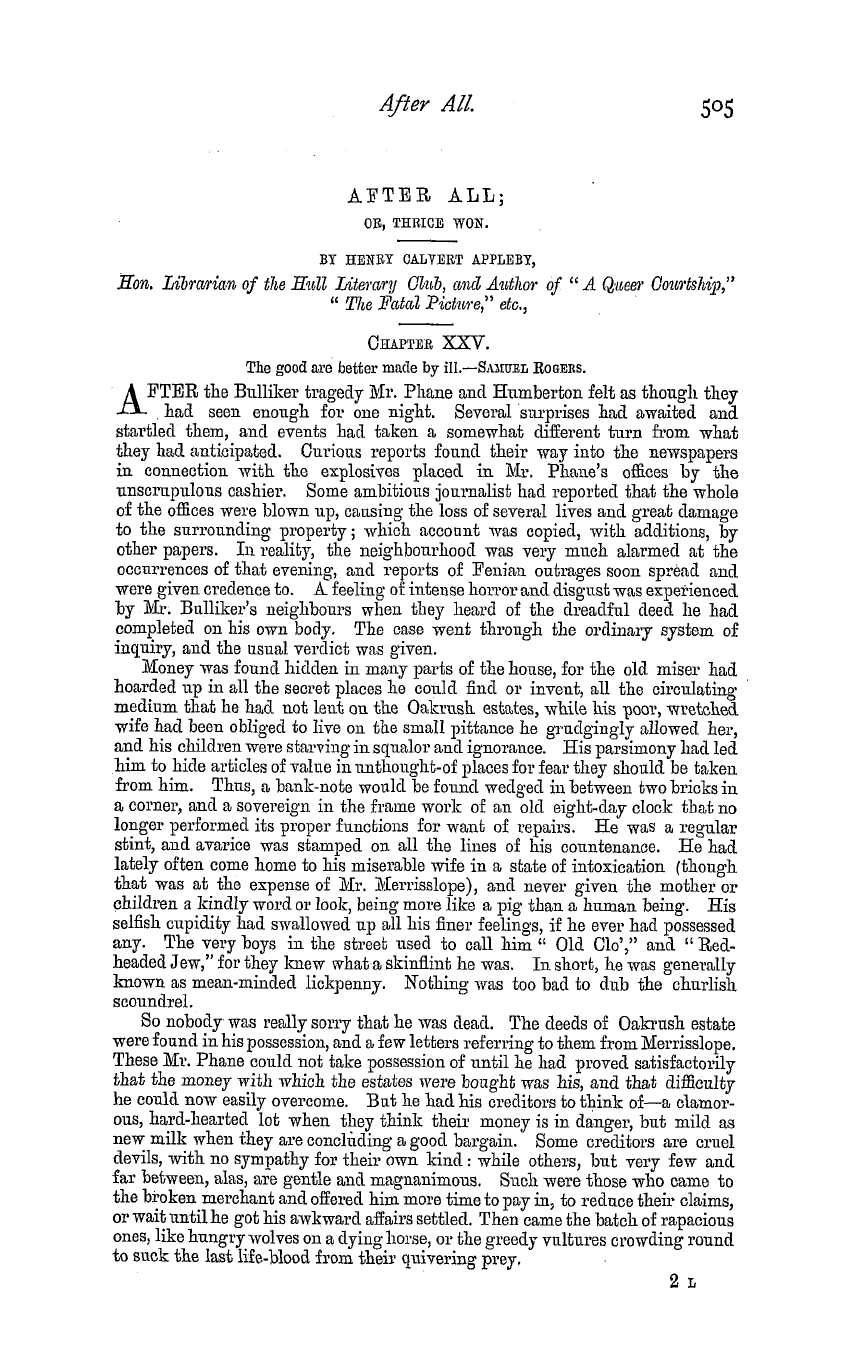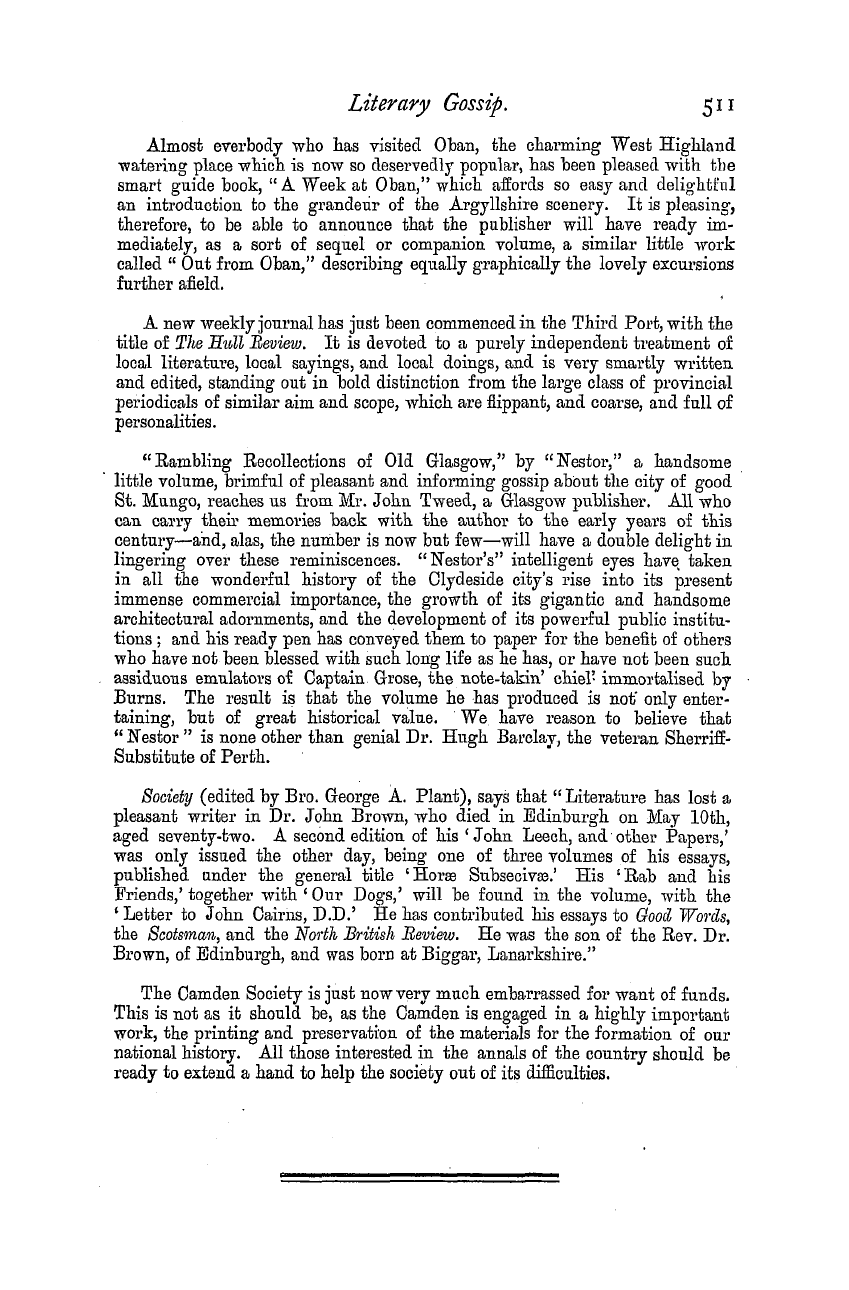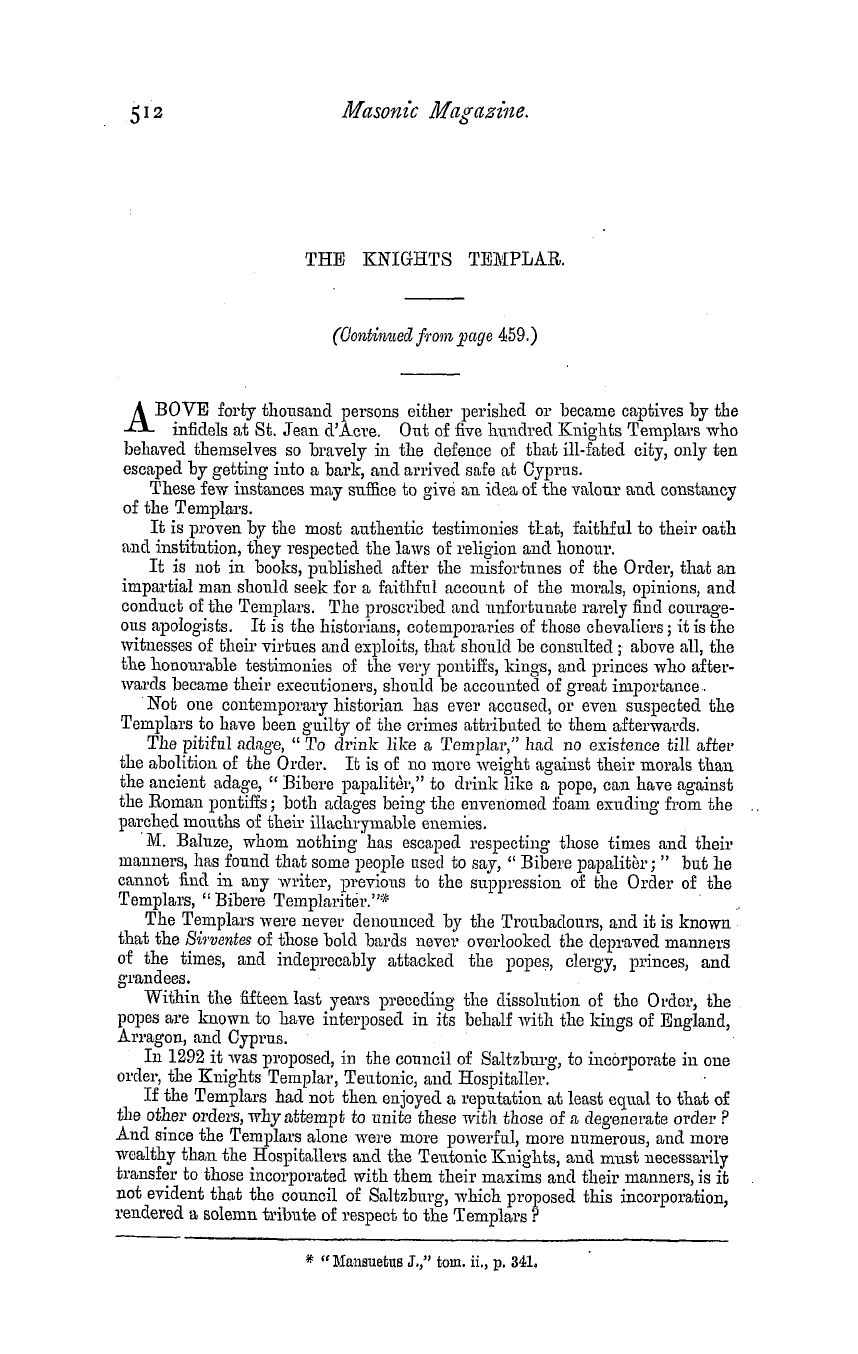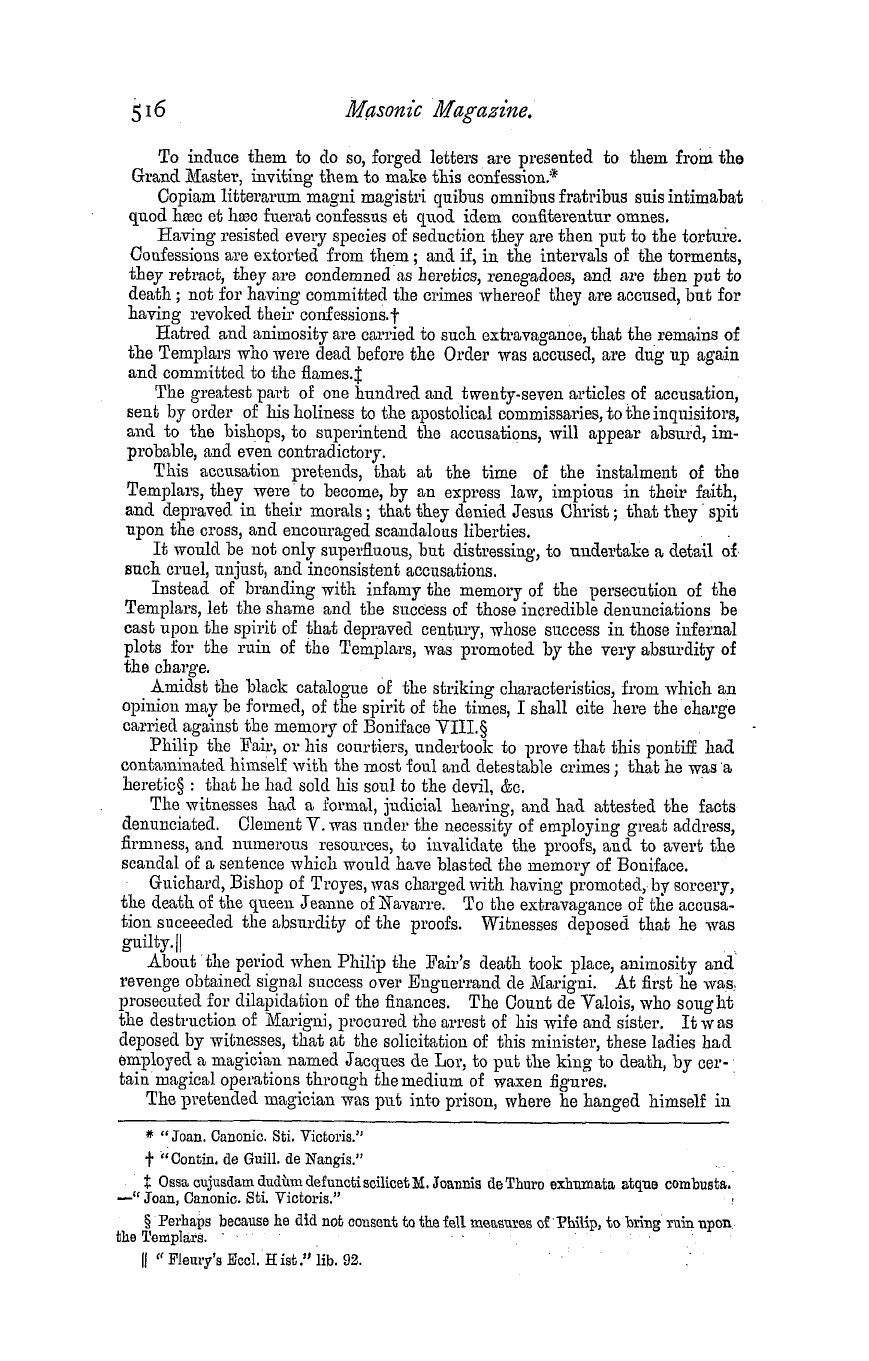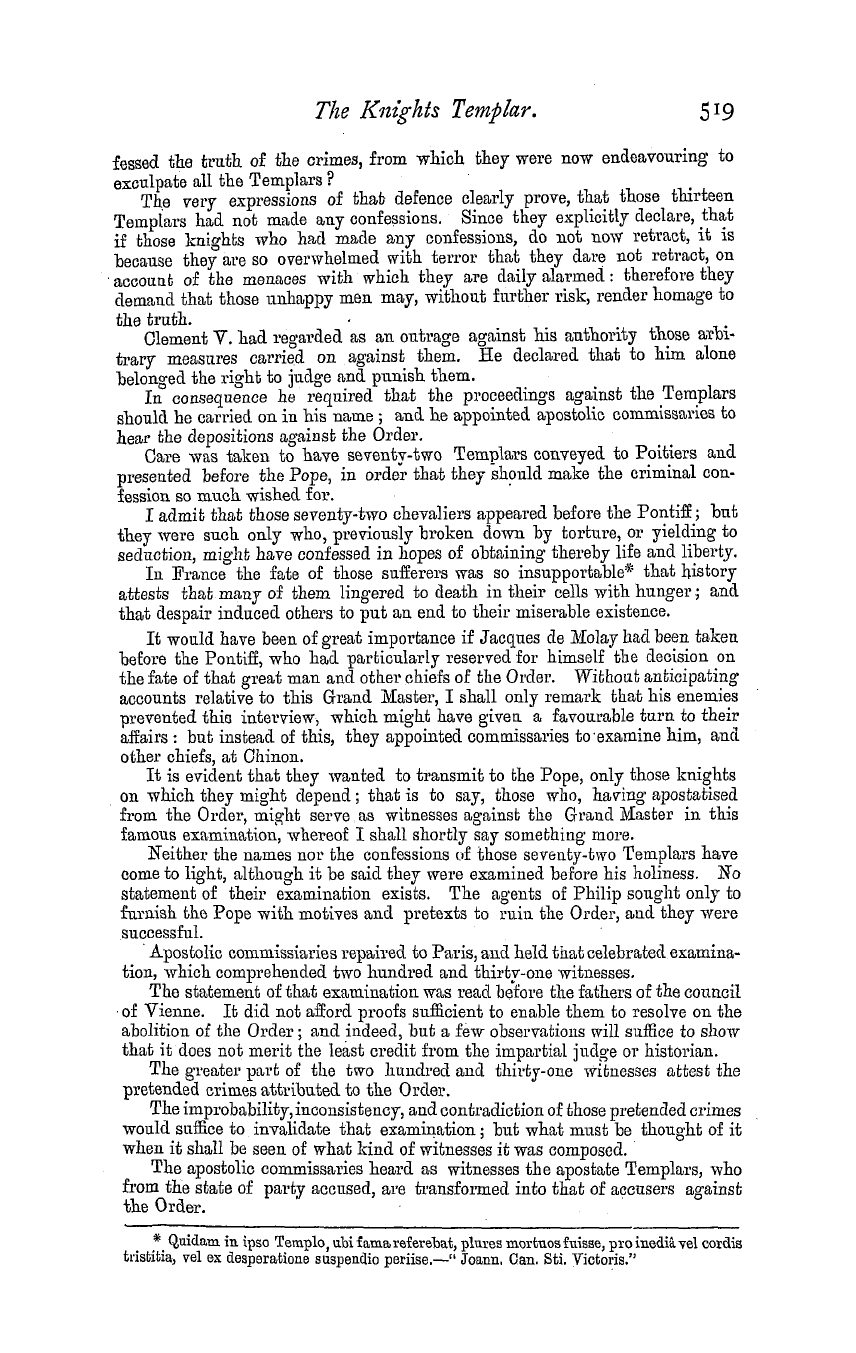-
Articles/Ads
Article THE KNIGHTS TEMPLAR. ← Page 7 of 9 →
Note: This text has been automatically extracted via Optical Character Recognition (OCR) software.
The Knights Templar.
In England the council of London decided , that if , in after a second examination , they persisted in their innocence , they should be put to the torture ; but that this should be done in such a manner that no incurable mutilation of any of their limbs , nor violent effusion of blood should take place * . The cries of indignation , the heart-rending groans of tortured innocence have , unnoticed , outstript the lapse of ages , and now reach the ears of posterity . Those Templars who had the virtue and the courage to defend the order in presence of the persecutors , incessantly reproached them with having extorted those false confessions from the weaker brethren by force of tortures and
menances . All these undeniable authorities will no longer permit us to doubt , that the barbarous and inexcusable mode of preliminary torture was resorted to in order to exort confession . It would be useless and irksome to attend to all the examinations which took place in France ; but I must make some observations on that of the one hundred and forty Templars arrested at the Monastery of the Temple .
This interrogatory or examination , whereof Dupui makes mention , is written on a very large roll of parchment . It is evident that it was written in the absence of the accused , and was made out from the notes successively taken at the different sessions of the tribunals . This manuscript bears all the characters of material authenticity requisite to support the documents of those times ; but as to its moral authenticity we may be allowed to entertain great doubts .
It is very probable that several Templars , seduced by promises , terrified by menaces , or borne down by torture , had made confession of guilt ; but those confessions obtained by seduction , or extorted b y the rack , aggravate the malice and opprobrium of the accusers . The scroll supposes that one hundred and thirty-seven knights had made a confession ; perhaps it may appear evident , that out of the number of one
hundred and forty interrogated , there were found more than three Templars who resisted seduction , menaces , and torture . When permission was given to such of the Templars as would undertake the defence of the Order , to appear before the papal commissaries , seventy-five presented themselves . Of this number I count at least thirteenf out of the one hundred and thirty-sevenwho were supposedat the time of examination
, , , to be guilty of the crimes imputed to the Order . Pierre cle Boulogne , priest and procurator-general of the Order , aged fortyfour years , acted as their prolocutor . According to this scroll of parchment , he appears to have made confessions .
Nevertheless he defended the Order with the greatest courage . He declared before the commissaries the seduction , ancl the tortures that had been made use of , in order to obtain false confessions from some of the chevaliers . If those thirteen defenders of the order , ancl particularly Pierre du Boulogne , who displayed so much zeal and courage in their assertions , had really confessed before the iniqnisitor the crimes attributed to the Order ; could the commissaries , whom the energy of that defence must have humbled and irritated , have failed to object that the prisoners themselves had before con-
Note: This text has been automatically extracted via Optical Character Recognition (OCR) software.
The Knights Templar.
In England the council of London decided , that if , in after a second examination , they persisted in their innocence , they should be put to the torture ; but that this should be done in such a manner that no incurable mutilation of any of their limbs , nor violent effusion of blood should take place * . The cries of indignation , the heart-rending groans of tortured innocence have , unnoticed , outstript the lapse of ages , and now reach the ears of posterity . Those Templars who had the virtue and the courage to defend the order in presence of the persecutors , incessantly reproached them with having extorted those false confessions from the weaker brethren by force of tortures and
menances . All these undeniable authorities will no longer permit us to doubt , that the barbarous and inexcusable mode of preliminary torture was resorted to in order to exort confession . It would be useless and irksome to attend to all the examinations which took place in France ; but I must make some observations on that of the one hundred and forty Templars arrested at the Monastery of the Temple .
This interrogatory or examination , whereof Dupui makes mention , is written on a very large roll of parchment . It is evident that it was written in the absence of the accused , and was made out from the notes successively taken at the different sessions of the tribunals . This manuscript bears all the characters of material authenticity requisite to support the documents of those times ; but as to its moral authenticity we may be allowed to entertain great doubts .
It is very probable that several Templars , seduced by promises , terrified by menaces , or borne down by torture , had made confession of guilt ; but those confessions obtained by seduction , or extorted b y the rack , aggravate the malice and opprobrium of the accusers . The scroll supposes that one hundred and thirty-seven knights had made a confession ; perhaps it may appear evident , that out of the number of one
hundred and forty interrogated , there were found more than three Templars who resisted seduction , menaces , and torture . When permission was given to such of the Templars as would undertake the defence of the Order , to appear before the papal commissaries , seventy-five presented themselves . Of this number I count at least thirteenf out of the one hundred and thirty-sevenwho were supposedat the time of examination
, , , to be guilty of the crimes imputed to the Order . Pierre cle Boulogne , priest and procurator-general of the Order , aged fortyfour years , acted as their prolocutor . According to this scroll of parchment , he appears to have made confessions .
Nevertheless he defended the Order with the greatest courage . He declared before the commissaries the seduction , ancl the tortures that had been made use of , in order to obtain false confessions from some of the chevaliers . If those thirteen defenders of the order , ancl particularly Pierre du Boulogne , who displayed so much zeal and courage in their assertions , had really confessed before the iniqnisitor the crimes attributed to the Order ; could the commissaries , whom the energy of that defence must have humbled and irritated , have failed to object that the prisoners themselves had before con-







